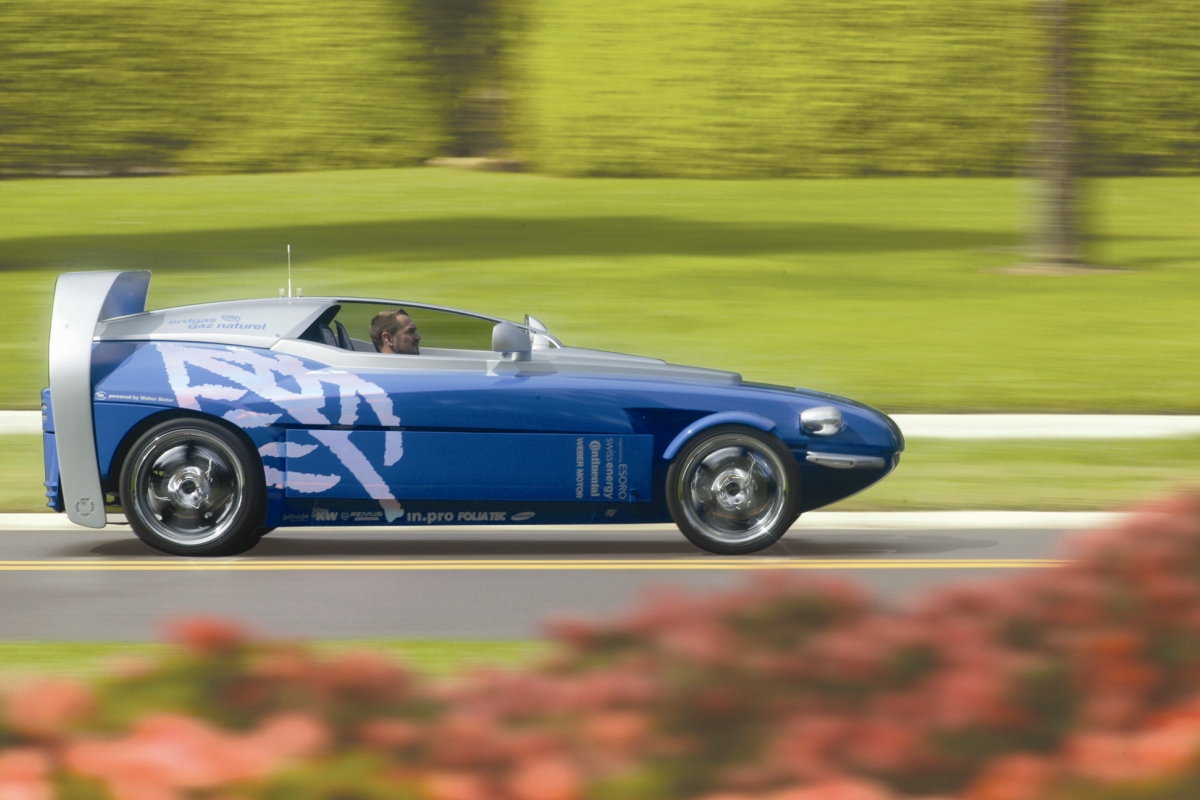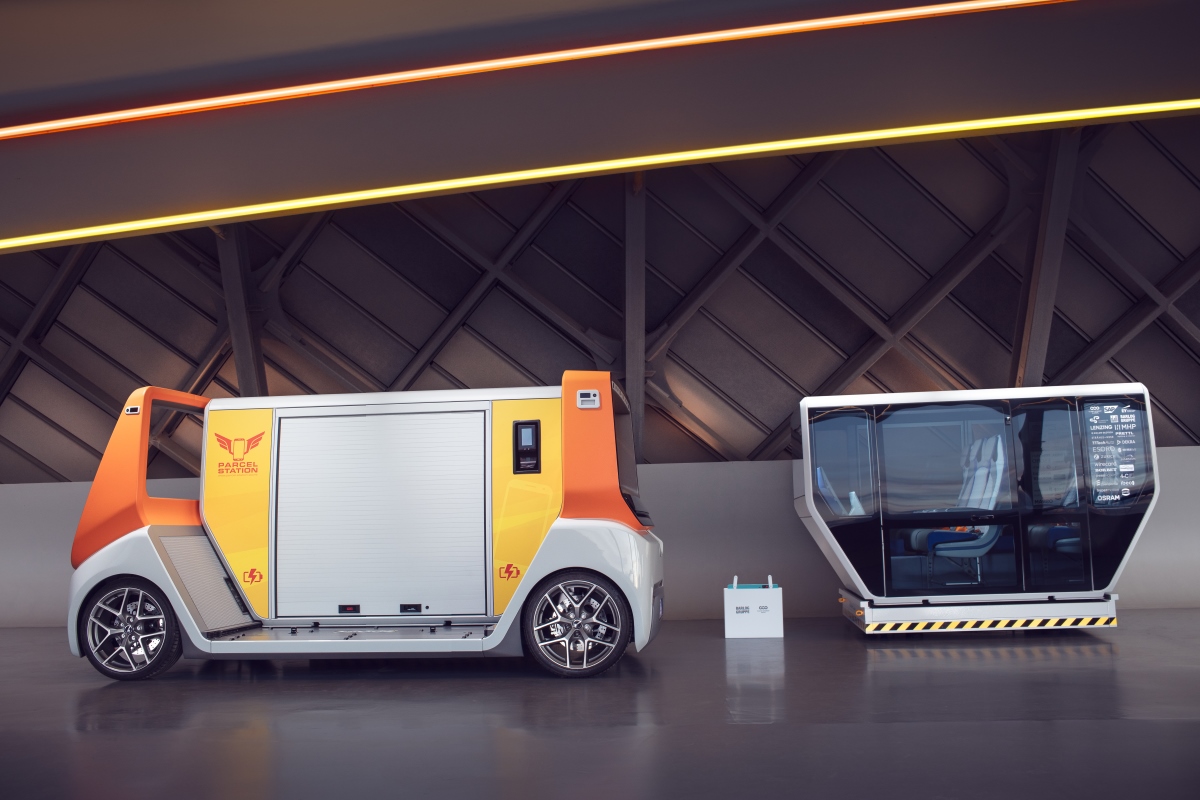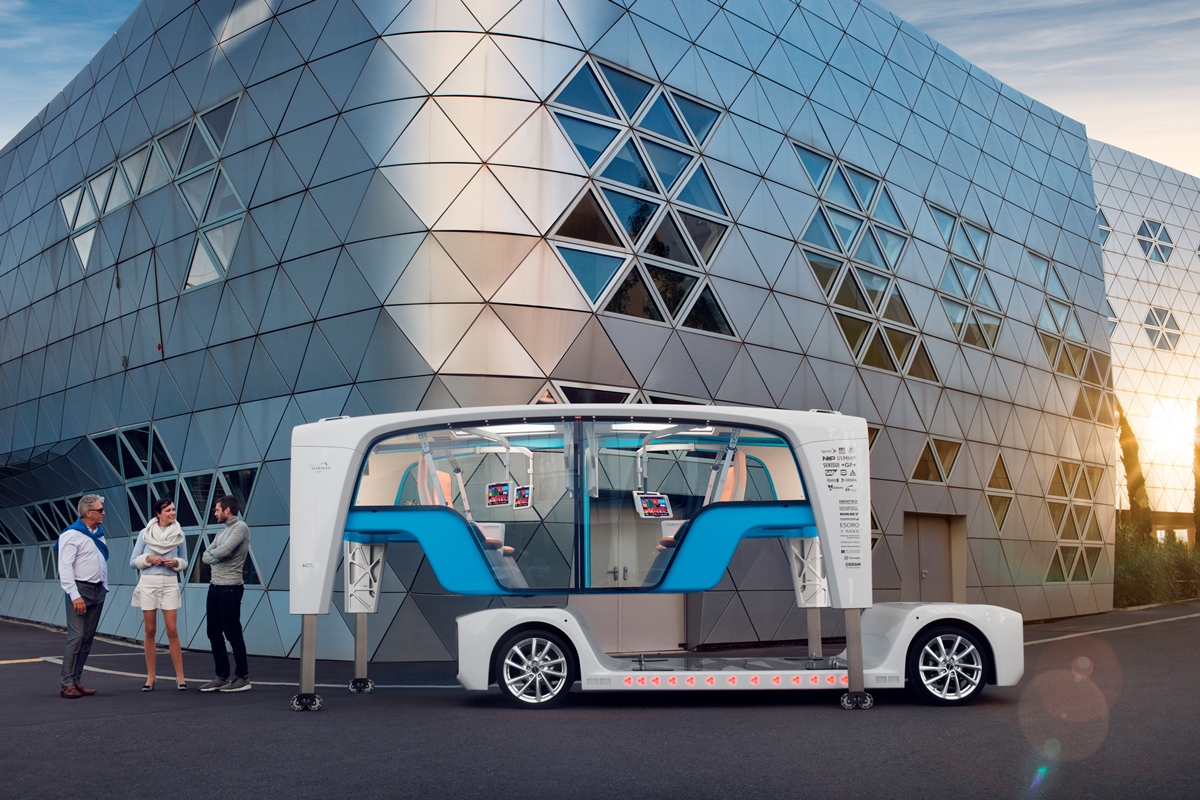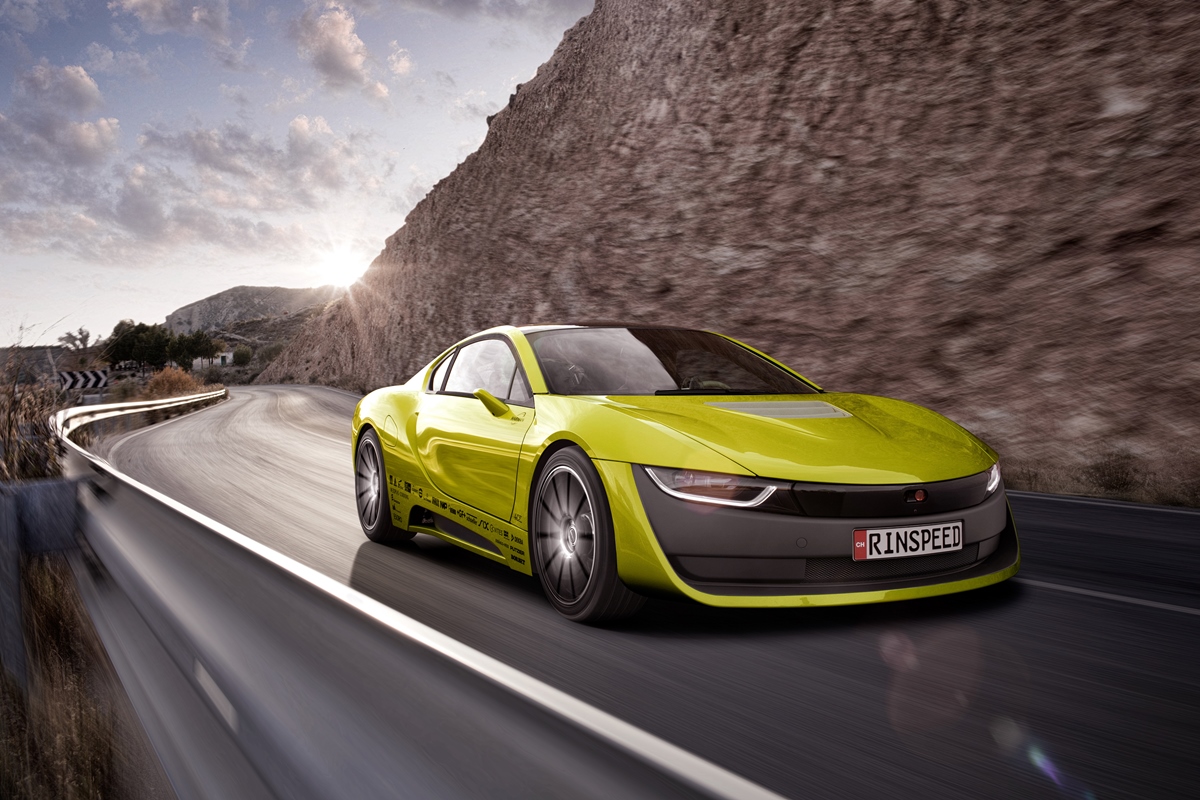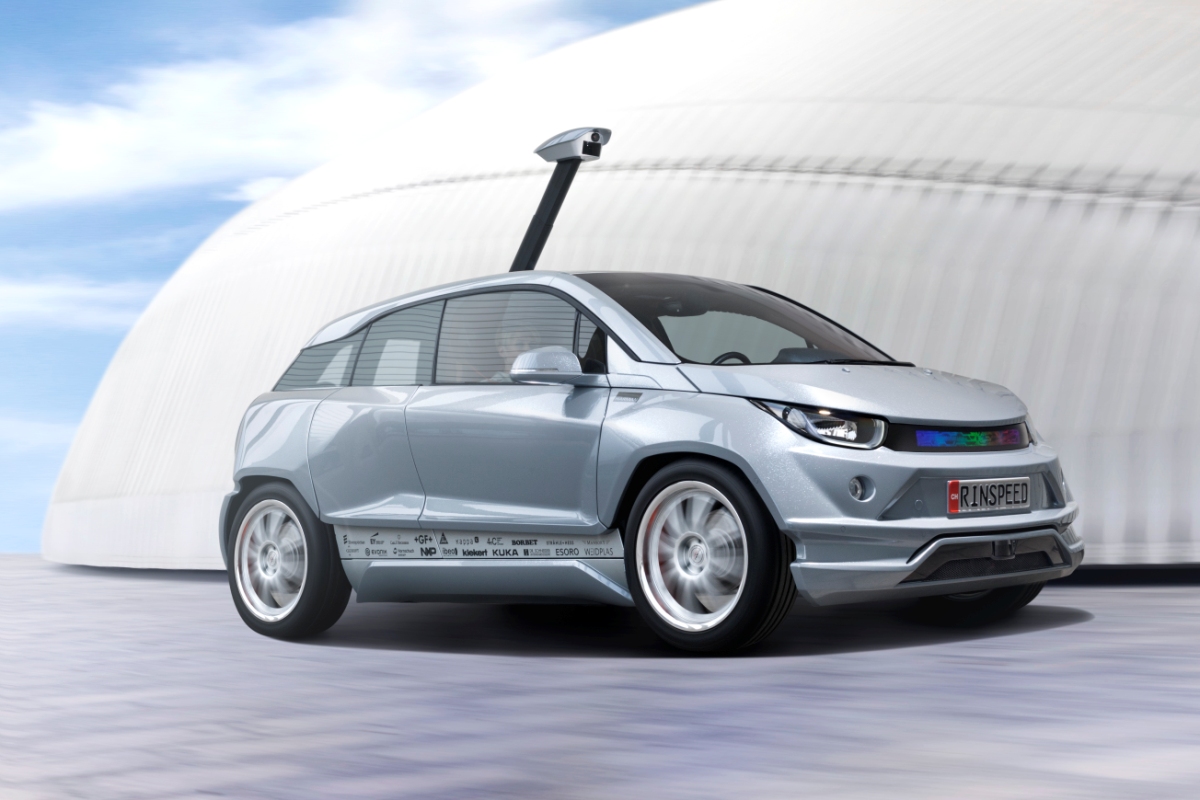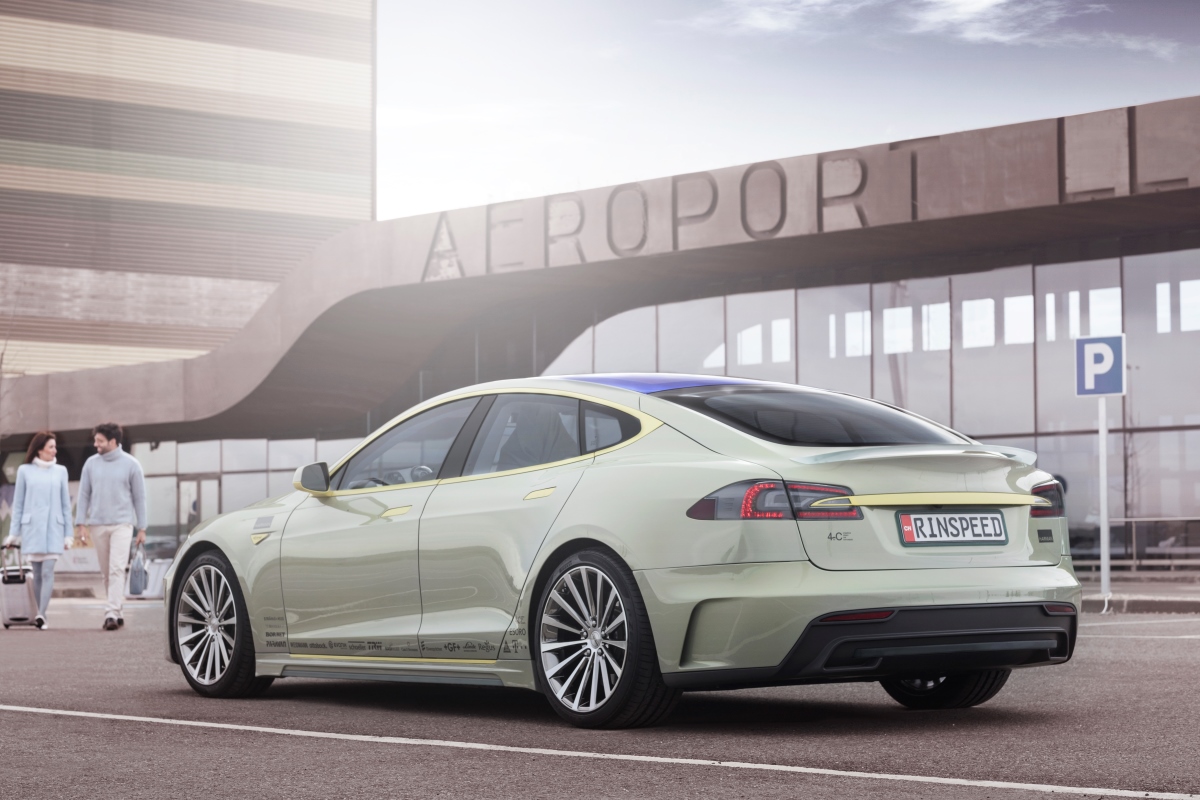This time, Rinspeed Design has come up with a challenging idea for an extraordinary concept vehicle. The Rinspeed Splash is the true incarnation of a really cool and fancy sports toy. At the push of a button, a cleverly thought-out hydraulic mechanism transforms the sports car into an amphibious vehicle. A highly complex integrated hydrofoil system enables the Splash to “fly” at an altitude of about 60 cm over the water.
ESORO realised this, by now most challenging concept car, together with our capable partners Naval Architecture (marine), Swissauto (drivetrain adaption) and Protoscar (design). The competent and highly efficient development team realised this completely new type of amphibic car in less than seven months, from the concept to the final tested and working prototype.
ESORO has been a contract developer in the areas of automotive production, lightweight design and plastics technology for more than thirteen years. During this time it gained a well-deserved reputation for excellent efficiency and innovative solutions. And not just in these, but also in other fields, including fuell-cell vehicles and prototype design. ESORO has impressively demonstrated its expertise with numerous extraordinary prototypes.
IDEA & CONCEPT
When Frank M. Rinderknecht came up with his idea to build a car propelled with natural gas, but one who could also swim and fly over the water, he seemed to have taken our motto “what you dream is what you get” really serious.
And it shouldn’t be a normal amphibic car: 200 km per hour on streets, and more than 50 km per hour on water had to be the minimum.
Of course, we were intrigued right away. We established the team with project leader Peter Kägi, took the lead with the total responsibility, as a contractor, for engineering and manufacturing and looked for the right partners: Naval Architecture for the marine part, Swissauto for the drivetrain adaption and Protoscar for the design.
In multiple brainstorming sessions and project meetings we refined the idea until we were absolutely sure that the Splash was feasible – and how we would build it.
TESTING
The concept was clear – now we turned to the engineering. But we couldn’t start without base data. Important time was used to build a virtual skeleton necessary for the engineering.
Then it got really busy.
In short time, the driver, chassis, drive train and other main components were built as digital mockups in their real place and position. Then we defined the space the moving parts were using, and the definition of overlapping parts. To engineer the missing parts, knowledge and experience is key. To safe time and costs, a part has to be detailed the least amount possible, but enough to comply with our requirements for quality.
Parallel to that, our marine partner, Naval Architecture, calculated the exact shape of the wings, the buoyancy values as well as the criteria for stability, and defined the whole ‘fuselage’.
DESIGN
At our partner for design, Protoscar, the 3D design of the Splash was worked out together with us and the strict requirements from the engineering side.
The first 2D drawings were used to define the direction of the design, and thereafter we used the 3D engineering to get the styling right. This turned out to be difficult, especially because the engineering restrictions which were necessary for the multi-functionality, were quite limiting. Nonetheless, the designer was able to work with those limitations, and shaped the Splash to convince equally on land as on water.
MANUFACTURING
The implementation of the ideas and the engineering into real hardware is always the hour of truth! Are our assumptions correct? Did we draw the right conclusions? Did we consider everything? Did we define all overlapping parts properly? Will the team be able to keep up with the high workload? Questions which go through project manager Peter Kägi’s mind again and again. Everybody worked feveriously: The WeberMotor gets adapted to new functions by Swissauto, the tools for the chassis were getting milled, parts got manufactured, the chassis was mounted, the wings were built in their definitive shape, the car was assembled, the hydraulic mounted and all functions were tested.
There were no surprises – everybody did a perfect job. We’re right in sync with the schedule and ready for the last round of testing.
TESTING
In this project, we planned for a testing phase quite early, because we had no prior experiences to rely upon. Especially the marine calculations for buoyancy and stability had to be verified with a real test.
A wooden box with approximate dimensions, an auxiliary motor with z-drive and very accurate wings were enough for that – and so the prototype swam and flew shortly after the definition of the concept – but still six months away from the deadline. He didn’t fly perfect, but good enough to greenlight the next phase. The fine-tuning had to be moved to January – a rather bad time for watertests in our latitudes.
31st of January: We delivered the tested and fully functional Splash to our client Rinspeed on time for movie- and fotoshootings. He went directly to Miami, USA!




